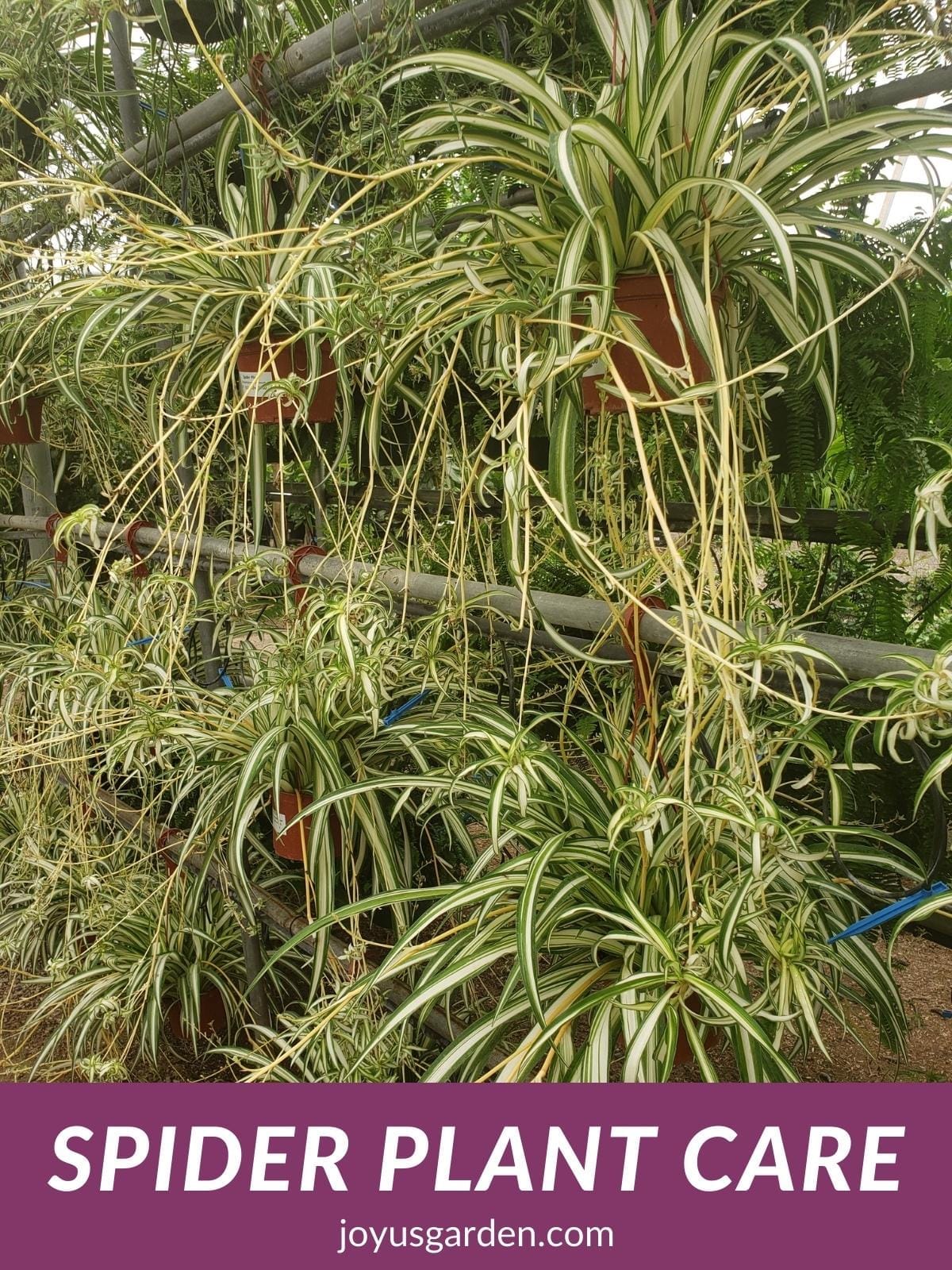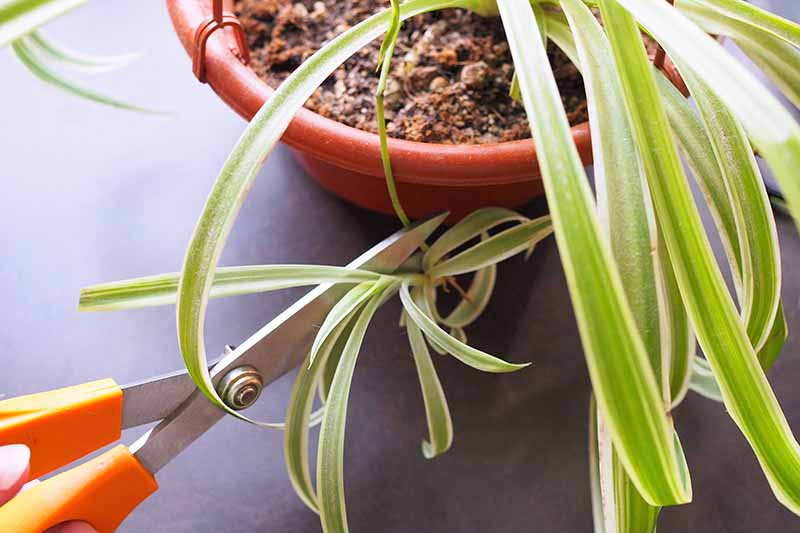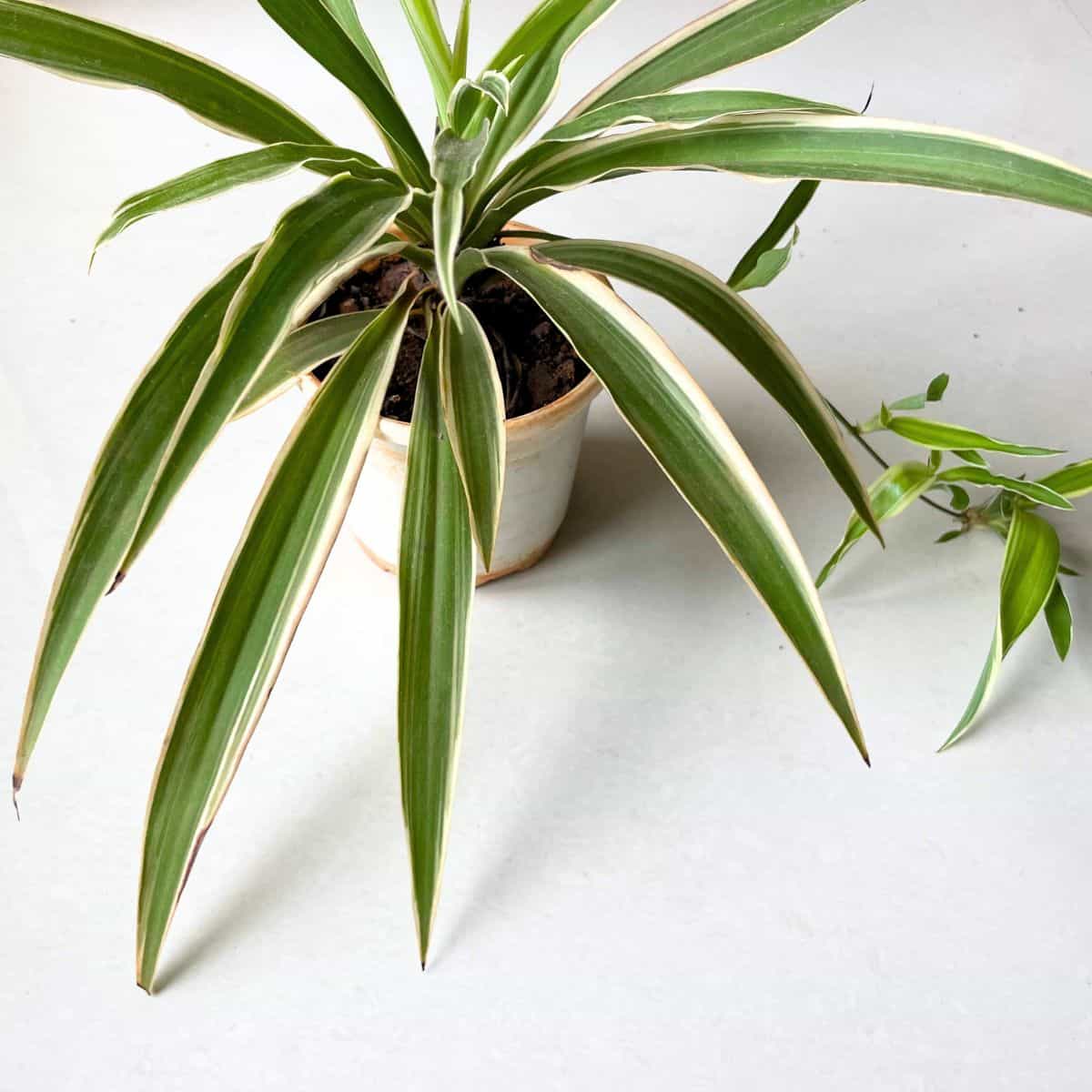Understanding the Basics of Spider Plant Care
Spider plants are one of the most popular, low-maintenance houseplants, and for good reason. With their elegant, arching stems and delicate white flowers, they add a touch of natural beauty to any room. But to keep your spider plant thriving and encourage it to grow a long, healthy stem, you need to understand its basic needs. Lighting, watering, and fertilization are the three key factors that will determine the success of your spider plant care.
When it comes to lighting, spider plants are relatively adaptable, but they do prefer bright, indirect light. Placing your spider plant near an east- or west-facing window is ideal, as this will provide the gentle, diffused light it needs to photosynthesize and grow. Avoid direct sunlight, which can cause the leaves to become scorched and the stem to become leggy.
Watering is another crucial aspect of spider plant care. These plants prefer well-draining soil and should be watered thoroughly, allowing the soil to dry slightly between waterings. Overwatering is a common mistake that can lead to root rot and other problems, so make sure to check the soil moisture by sticking your finger into the soil up to the first knuckle. If the soil feels dry, it’s time to water.
Fertilization is also essential for promoting healthy growth in spider plants. Use a balanced, water-soluble fertilizer that contains equal amounts of nitrogen, phosphorus, and potassium. Dilute the fertilizer to half the recommended strength to avoid burning the roots, and apply it once a month during the growing season.
By understanding and meeting these basic needs, you’ll be well on your way to growing a healthy, thriving spider plant with a long, elegant stem. Remember to monitor your plant’s progress and adjust your care routine as needed to ensure optimal growth and development.
How to Encourage Long Stem Growth in Spider Plants
Spider plants are known for their elegant, arching stems, but to encourage long stem growth, you need to provide the right conditions and use a few clever techniques. Pruning, staking, and using grow lights are all effective ways to promote long stem growth in spider plants.
Pruning is an essential part of spider plant care, as it helps to control the shape of the plant and encourage new growth. To prune your spider plant, simply cut off any dead or damaged leaves or stems, and trim back any leggy growth to encourage branching. This will help to promote a fuller, more compact plant with longer stems.
Staking is another technique that can help to promote long stem growth in spider plants. By providing support for the stems, you can encourage them to grow upright and reach their full potential. Use a soft material like twine or a plant stake to gently tie the stems to a trellis or other support.
Grow lights can also be used to promote long stem growth in spider plants. By providing supplemental lighting, you can increase the amount of light the plant receives, which can help to promote healthy growth and development. Look for grow lights that are specifically designed for indoor plants, and follow the manufacturer’s instructions for use.
Hormones also play a crucial role in plant growth, and by manipulating them, you can encourage your spider plant to grow longer stems. Auxins, for example, are a type of hormone that promotes cell elongation and can help to encourage stem growth. You can use a commercial plant growth regulator that contains auxins to promote long stem growth in your spider plant.
By using these techniques, you can encourage your spider plant to grow longer stems and become a more elegant, attractive plant. Remember to always monitor your plant’s progress and adjust your care routine as needed to ensure optimal growth and development.
The Role of Light in Spider Plant Growth
Light is one of the most critical factors in spider plant growth, and understanding its role is essential for promoting healthy, long-stemmed plants. Spider plants require bright, indirect light to photosynthesize and grow, but direct sunlight can be too intense and cause the leaves to become scorched.
The type of light spectrum also plays a crucial role in spider plant growth. Spider plants respond well to light in the blue and red spectrum, which promotes healthy growth and development. East- and west-facing windows are ideal for spider plants, as they provide gentle, indirect light that is perfect for promoting long stem growth.
However, not all of us have the luxury of east- or west-facing windows. If you’re struggling to provide your spider plant with enough natural light, consider using grow lights to supplement the existing light. Grow lights can provide the necessary light spectrum and intensity to promote healthy growth and development.
When using grow lights, it’s essential to choose the right type and intensity for your spider plant. Look for grow lights that are specifically designed for indoor plants, and follow the manufacturer’s instructions for use. Some popular types of grow lights for spider plants include LED grow lights, fluorescent grow lights, and HPS grow lights.
By providing your spider plant with the right type and intensity of light, you can promote healthy growth and development, including long stem growth. Remember to monitor your plant’s progress and adjust your lighting accordingly to ensure optimal growth and development.
In addition to providing the right type and intensity of light, it’s also essential to consider the duration of light exposure. Spider plants typically require 12-14 hours of light per day, so make sure to provide your plant with a consistent light schedule to promote healthy growth and development.
Watering and Humidity: Finding the Sweet Spot for Spider Plant Growth
Watering and humidity are two crucial factors that can make or break the health and growth of your spider plant. Spider plants prefer well-draining soil and should be watered thoroughly, allowing the soil to dry slightly between waterings. Overwatering is a common mistake that can lead to root rot and other problems, while underwatering can cause the leaves to become wilted and the stems to become weak.
To determine the right watering schedule for your spider plant, check the soil moisture by sticking your finger into the soil up to the first knuckle. If the soil feels dry, it’s time to water. Water your spider plant thoroughly, making sure the pot drains well to prevent waterlogged soil.
In addition to proper watering, maintaining optimal humidity levels is also essential for spider plant growth. Spider plants prefer a humid environment, typically between 40-60% relative humidity. To maintain optimal humidity levels, you can use a humidifier or group plants together to create a microclimate.
Using a humidifier can be especially beneficial for spider plants, as it can help to maintain a consistent humidity level and prevent dry air from causing stress to the plant. Look for a humidifier that is specifically designed for indoor plants, and follow the manufacturer’s instructions for use.
By finding the sweet spot for watering and humidity, you can promote healthy growth and development in your spider plant, including long stem growth. Remember to monitor your plant’s progress and adjust your care routine as needed to ensure optimal growth and development.
In addition to proper watering and humidity, it’s also essential to consider the temperature of your spider plant’s environment. Spider plants prefer temperatures between 65-75°F (18-24°C), and should be kept away from drafts and extreme temperatures.
Fertilization and Nutrient Balance: Feeding Your Spider Plant for Optimal Growth
Fertilization is a crucial aspect of spider plant care, as it provides the necessary nutrients for optimal growth and development. Spider plants require a balanced diet of macronutrients and micronutrients to thrive, and using a balanced fertilizer can help to promote healthy growth and long stem development.
Macronutrients, such as nitrogen, phosphorus, and potassium, are essential for spider plant growth and development. Nitrogen promotes leaf growth and development, while phosphorus supports root growth and flower production. Potassium helps to regulate water balance and promotes overall plant health.
Micronutrients, such as iron, zinc, and magnesium, are also essential for spider plant growth and development. These nutrients help to regulate various plant processes, including photosynthesis and cell division.
To fertilize your spider plant, use a balanced fertilizer that contains equal amounts of nitrogen, phosphorus, and potassium. Dilute the fertilizer to half the recommended strength to avoid burning the roots, and apply it once a month during the growing season.
It’s also important to avoid over-fertilization, as this can cause more harm than good. Over-fertilization can lead to an overabundance of nutrients, which can cause the plant to become stressed and vulnerable to disease.
By providing your spider plant with a balanced diet of macronutrients and micronutrients, you can promote healthy growth and development, including long stem growth. Remember to fertilize your spider plant regularly, but avoid over-fertilization to ensure optimal growth and development.
In addition to fertilization, it’s also important to consider the pH level of your spider plant’s soil. Spider plants prefer a slightly acidic to neutral soil pH, ranging from 6.0 to 7.0. Avoid using fertilizers that can alter the soil pH, as this can cause stress to the plant.
Pruning and Training: Shaping Your Spider Plant for Maximum Impact
Pruning and training are essential techniques for maintaining the shape and promoting long stem growth in spider plants. By pruning your spider plant regularly, you can encourage bushy growth, increase air circulation, and reduce the risk of disease.
To prune your spider plant, start by removing any dead or damaged leaves or stems. This will help to prevent the spread of disease and encourage healthy growth. Next, cut back any leggy stems to encourage branching and promote a fuller plant.
Training is also an important part of spider plant care. By training your spider plant to grow up a trellis or other support, you can encourage long stem growth and create a more dramatic display. Use a soft material like twine or a plant clip to gently tie the stems to the support, and make sure to provide enough space for the plant to grow.
Pruning and training can also help to control the size and shape of your spider plant. By pruning back the stems, you can encourage the plant to grow more compactly, making it ideal for smaller spaces. By training the stems to grow up a support, you can create a more vertical display, making the most of your space.
Some common pruning techniques for spider plants include pinching, cutting back, and thinning out. Pinching involves removing the growing tip of the stem to encourage branching, while cutting back involves cutting the stem back to a node to encourage new growth. Thinning out involves removing select stems to allow more air and light to reach the remaining stems.
By pruning and training your spider plant regularly, you can promote healthy growth, encourage long stem growth, and create a more dramatic display. Remember to prune and train your spider plant regularly to maintain its shape and promote optimal growth.
Common Problems and Solutions: Troubleshooting Spider Plant Growth Issues
Despite their low-maintenance reputation, spider plants can still be susceptible to common problems that can affect their growth and health. In this section, we’ll discuss some of the most common issues that can affect spider plant growth, and provide solutions and troubleshooting tips to help you overcome these challenges.
Pests are one of the most common problems that can affect spider plant growth. Spider mites, mealybugs, and scale are all common pests that can infest spider plants, causing damage to the leaves and stems. To control pests, use insecticidal soap or neem oil, and make sure to isolate the affected plant to prevent the pests from spreading.
Diseases are another common problem that can affect spider plant growth. Root rot, leaf spot, and crown rot are all common diseases that can affect spider plants, causing damage to the roots, leaves, and stems. To control diseases, use fungicides, and make sure to improve air circulation and reduce watering to prevent moisture from accumulating on the leaves and stems.
Environmental stressors are also a common problem that can affect spider plant growth. Temperature fluctuations, low humidity, and exposure to drafts can all cause stress to the plant, leading to poor growth and health. To control environmental stressors, make sure to provide a stable temperature, maintain high humidity, and protect the plant from drafts.
By being aware of these common problems and taking steps to prevent and control them, you can help to ensure the health and growth of your spider plant. Remember to monitor your plant regularly, and take action quickly if you notice any signs of pests, diseases, or environmental stressors.
In addition to these common problems, spider plants can also be susceptible to nutrient deficiencies, which can affect their growth and health. To prevent nutrient deficiencies, make sure to fertilize your spider plant regularly, using a balanced fertilizer that contains all the necessary nutrients for optimal growth.
Conclusion: Unlocking the Full Potential of Your Spider Plant
By following the tips and techniques outlined in this article, you can unlock the full potential of your spider plant and enjoy a lush, long-stemmed beauty that will thrive in your home or office. Remember to provide your spider plant with the right amount of light, water, and nutrients, and to prune and train it regularly to maintain its shape and promote long stem growth.
With proper care and attention, your spider plant can grow up to 2 feet long, with stems that are strong and sturdy, and leaves that are a vibrant green color. By manipulating the hormones in your spider plant, you can encourage it to grow longer stems and produce more leaves, creating a fuller and more dramatic display.
Don’t be discouraged if your spider plant doesn’t grow as quickly as you would like. With patience and persistence, you can encourage your spider plant to grow long stems and thrive in its environment. Remember to monitor your plant regularly, and take action quickly if you notice any signs of pests, diseases, or environmental stressors.
By unlocking the full potential of your spider plant, you can enjoy a beautiful and thriving plant that will bring joy and beauty to your home or office. So why not give it a try? With the right care and attention, your spider plant can grow into a stunning and elegant plant that will be the envy of all your friends and family.






